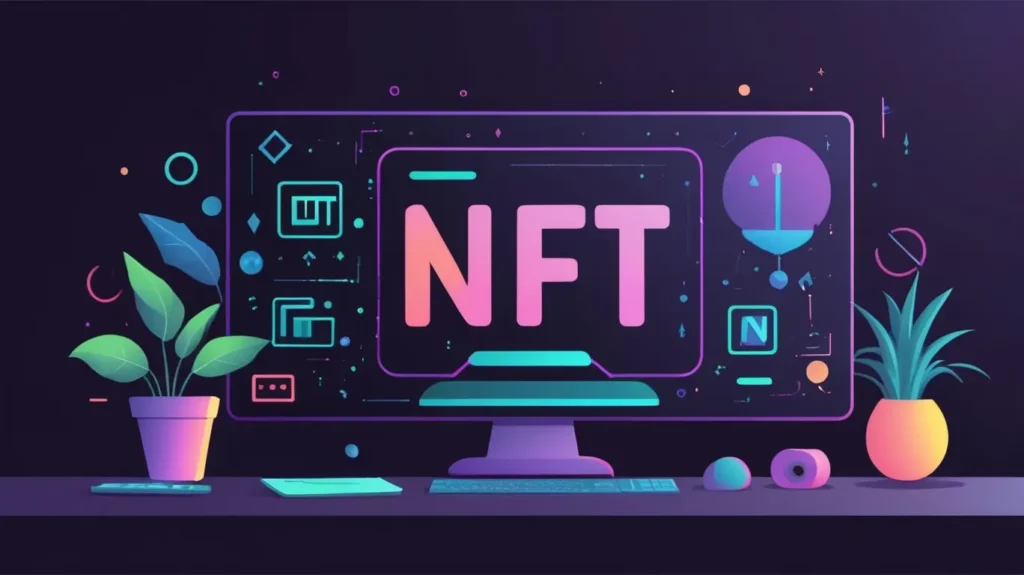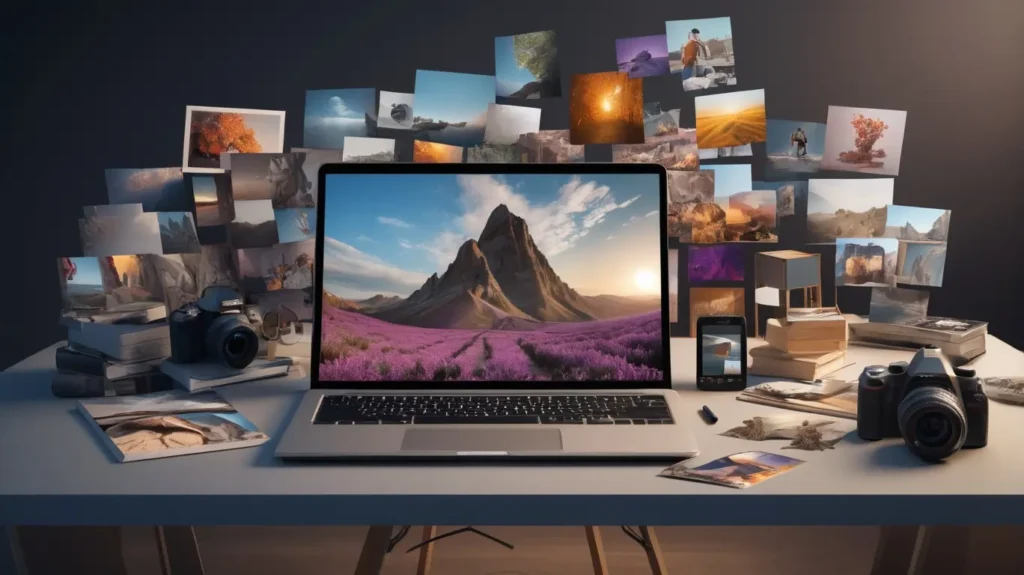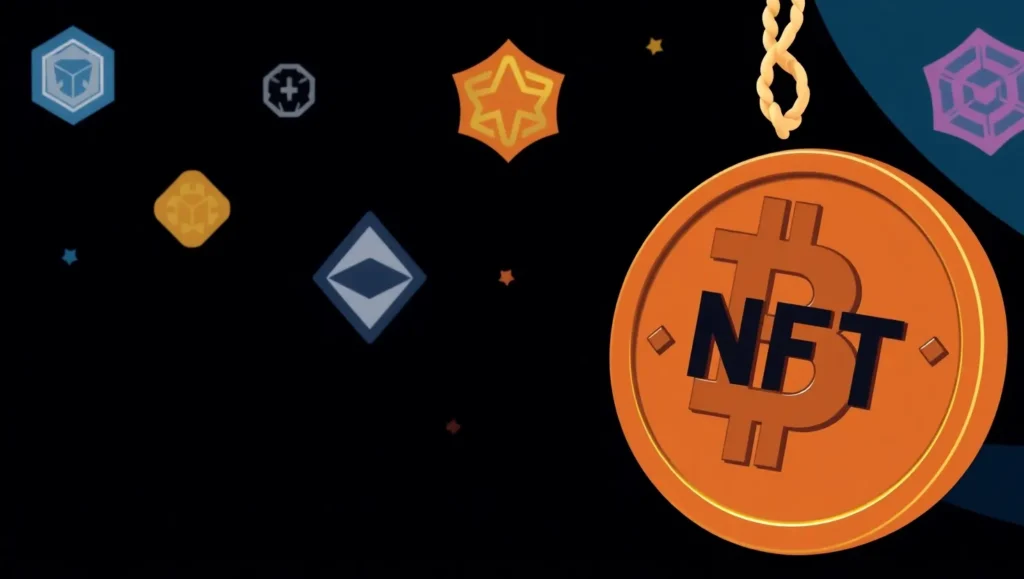The world of photography has met the exciting frontiers of blockchain technology, offering photographers new ways to monetize their art. How to sell photos as NFTs —a phrase and a question that now resonates widely in digital art circles—is rapidly growing in popularity. But how does one begin this novel journey of turning snapshots into valuable digital assets? Let’s embark on this exploration together; here, you’ll find all you need to know to transform your images into unique tokens that the world can appreciate and buy.
Understanding NFTs and the Market
A Step Backwards: What Were NFTs Again?
Non-fungible tokens, or NFTs, represent ownership of a specific piece of digital media powered by blockchain technology. Unlike cryptocurrencies such as Bitcoin—which are interchangeable and hold an equal value—NFTs are unique. Each token holds specific metadata recording the ownership and provenance of digital content, making it a perfect vessel for authenticating and valuing original photography.
How NFTs Differ from Traditional Photography
Traditional photography involves capturing and selling tangible prints or licenses for use, often limiting revenue streams to galleries and stock photo agencies. NFTs change this paradigm by offering perpetual proof of ownership to a digital piece, which can be resold, displayed in virtual galleries, and even accrue in value over time. This digital shift enhances the scope and reach of photography, providing photographers with a globally accessible marketplace.
Personal Experience Insight: Photographer Justin Aversano has gained significant attention in the NFT space with his project, “Twin Flames.” Aversano sold 100 photographic NFTs for a total of $8.5 million, showcasing the potential for substantial returns. His success stemmed from the storytelling aspect of his work—portraits of twins that emotionally resonated with collectors.
The Current NFT Market Landscape for Photography
Today’s NFT market for photography is vibrant and bustling with creativity. Artists from around the world are minting their photography onto blockchain platforms, reaching expansive audiences. The popularity of digital ownership has generated high sales, with some photographers earning significant returns. This enthusiasm, coupled with a generous global community, provides a powerful impetus for photographers to delve into NFTs.
Personal Experience Insight:Fabio Nodari, a photographer who has ventured into selling photos as NFTs, emphasizes the opportunities for photographers who are already making profits from stock photography to transition into the NFT market. He highlights that NFTs enable photographers to create a verifiable scarcity for their digital images, a concept previously only applicable to physical collectibles like paintings or stamps.
Choosing a Platform
Popular NFT Marketplaces for Photography
When it comes to how to sell photos as NFTs, choosing the right marketplace can make all the difference. Platforms like OpenSea, Rarible, and Foundation are well-regarded in the NFT community for their robust infrastructures and large user bases. Each platform offers unique benefits; for instance, OpenSea provides a versatile marketplace with a vast array of NFTs, while Foundation is known for its curated art collections.
Personal Experience Insight: Photographers like Nodari have highlighted that OpenSea’s user-friendly interface and extensive audience make it an ideal platform for minting their first NFTs. He appreciated the low entry barriers that OpenSea offers, although he pointed out the high gas fees that can occur during peak times on the Ethereum network. In a similar vein, platforms like Foundation attracted photographers such as Aversano, who were looking for a curated environment to display their work to serious collectors.
Factors to Consider When Selecting a Platform
The choice of platform often depends on factors such as ease of use, audience reach, and platform focus. Photographers should also consider whether a platform specializes in certain types of art or offers specific promotional tools to support creators. Ease of integration with digital wallets and blockchain networks also plays a crucial role in the decision-making process.
Fees and Commissions Associated with Different Marketplaces
Most platforms charge fees for listing and selling NFTs, which can vary significantly. It’s important to understand these costs upfront—ranging from gas fees for minting on the Ethereum blockchain to platform-specific commissions—and factor them into your pricing strategy. For instance, Ethereum-based marketplaces may have higher gas fees during periods of network congestion, affecting the net earnings from a sale.
Preparing Your NFT
1. High-Quality Image Preparation
Quality speaks volumes, especially when you’re trying to sell art in digital markets. Ensure your images are of the highest resolution and clarity, as these qualities directly impact the perceived value of your NFT. Consider employing editing tools to enhance your photos and make them stand out in a competitive market.
2. Writing Compelling Descriptions and Metadata
An engaging description not only attracts potential buyers but also enhances the storytelling aspect of your image when it comes to how to sell photos as NFTs. Highlight the inspiration behind the shot, the technique used, and the unique features that make your photo an attractive piece. Metadata plays a crucial role in searchability and visibility—use keywords effectively to boost the discoverability of your work.
3. Creating a Strong Brand Identity for Your Photography
Brand identity goes beyond just your photographs; it’s about the narrative and persona you’re sharing with the world. Engage consistently with themes and styles that resonate with your artistic vision, and develop a portfolio that reflects your unique perspective. A well-defined brand helps build a lasting connection with your audience.
Setting a Price
4. Determining the Value of Your NFT Photography
Pricing your NFT correctly can be a challenging but essential part of the selling process. Consider factors such as the uniqueness of your work, the potential demand, and how your pieces compare to similar works on the market. Researching price trends within your niche can also provide useful insights.
5. Pricing Strategies and Factors to Consider
From auctions to fixed prices, deciding how to sell your photo NFTs involves strategic decisions. Auctions can create a sense of urgency and incite bidding wars, potentially increasing the final sale price. However, fixed-price sales offer predictability and simplicity, which may appeal to novice NFT collectors.
6. Auctions vs. Fixed-Price Sales
Choosing between these two models often depends on your confidence in the piece. If you believe your image will attract high interest or is particularly unique, an auction may maximize your returns. A fixed-price sale, however, could cater to market trends where buyers prefer straightforward transactions.
Marketing and Promotion
1. Building an Online Presence as a Photographer
Elevating your online presence is crucial in the NFT world if you want to become the master of how to sell photos as NFTs. Make use of personal websites, photography blogs, and digital portfolios to showcase your work. Align your online presence with your brand identity and ensure consistent updates that engage audiences.
2. Leveraging Social Media and Communities
Social media platforms like Instagram, Twitter, and Discord are powerful tools for marketing. Engage with other photographers, share your work regularly, and participate in NFT discussions. The use of platforms like Clubhouse for networking with fellow artists and collectors further expands your reach and potential impact.
3. Collaborating with Other Artists and Influencers
Collaborations can significantly enhance visibility and credibility. Joint projects with other artists or influencer endorsements introduce your work to new audiences and can authenticate your artistry within different communities.
Engaging with the Community
1. Building Relationships with Collectors
Creating lasting relationships with collectors is vital for long-term success in the NFT space. Regularly engage with feedback, acknowledge buyers, and offer exclusives for returning customers to build loyalty. A collector’s appreciation can lead to future sales and valuable referrals.
2. Participating in NFT Discussions and Forums
Active participation in discussions and forums helps to expand knowledge and integrate into the NFT ecosystem. These platforms offer networking opportunities, insights, and a chance to influence trends and decisions within the community.
3. Providing Excellent Customer Service
Good customer service can differentiate you from other photographers. Timely interactions, transparent policies, and willingness to assist in buyer inquiries enhance the buying experience and reputation
Addressing Copyright and Legal Issues
Understanding NFT Copyright Laws for Photography
Navigating the legal landscape of NFTs and how to sell photos as NFTs requires understanding copyright laws. While minting a photo as an NFT implies ownership transfer of the token, it doesn’t automatically waive the photographer’s copyright. Clearly defining terms of use is essential.
Personal Experience Insight: Nodari advises photographers to register their work with a copyright office before minting it as NFTs to strengthen their legal claims. He also recommends using watermarks during previews to deter theft. Meanwhile, Aversano included clear terms in his NFT metadata, specifying that buyers receive digital ownership but not copyright, to avoid potential disputes.
Protecting Your Intellectual Property
Consider registering your images and seeking legal advice on protecting your work in the NFT domain. Vigilance is crucial as the digital marketplace is susceptible to unauthorized copying and scams.
Legal Considerations for International Sales
Ensure compliance with international laws if your NFTs are purchased across borders. Understanding how different countries handle digital assets can prevent any potential legal pitfalls.
Tax Implications and Financial Considerations
Understanding Tax Laws Related to NFT Sales of Photography
Each sale may be subject to capital gains tax, depending on local tax regulations. It’s imperative to consult with a tax professional to understand your liabilities and plan your finances accordingly.
Financial Planning and Investment Strategies
View NFT sales as part of a broader financial strategy. Set financial goals, diversify your digital and physical assets, and plan for potential market volatility.
Safeguarding Your Digital Assets
Secure your NFTs using safe wallets and two-factor authentication to protect against theft and unauthorized access. Digital security should be a priority for any artist with valuable art on blockchain platforms.
Finishing Words
Turning photos into NFTs is not just a technological endeavor; it’s a creative revolution offering photographers novel avenues of expression and income. By understanding the intricacies of the NFT market, choosing the right platform, crafting a marketable brand, and engaging effectively with the community, we can successfully navigate this burgeoning frontier and learn how to sell photos as NFTs. The marriage of artistry and blockchain technology sets the stage for a new era in photography, one where creativity thrives alongside innovation.
1. What is the impact of blockchain on environmental concerns related to NFTs?
Blockchain technology, particularly Ethereum, has faced criticism for its environmental impact due to energy consumption. The industry is exploring solutions like Ethereum 2.0, which promises a more sustainable, proof-of-stake network to address these concerns.
2. Can NFTs help protect against digital art theft?
While NFTs offer proof of ownership, they don’t inherently prevent unauthorized copying. They do, however, provide a strong case for ownership claims in disputes, thanks to the transparency of blockchain records.
3. Are there any offline strategies to complement NFT sales?
Yes, participating in exhibitions, building connections with traditional art institutions, and hosting workshops can complement online sales. These strategies broaden your audience and validate your work across different platforms.






